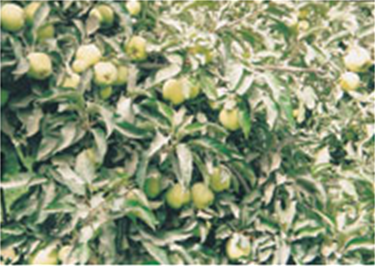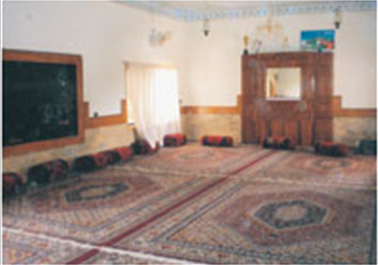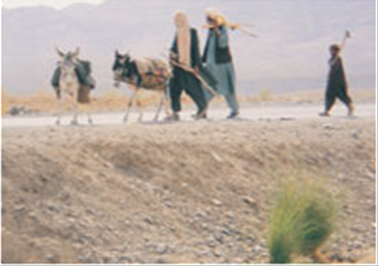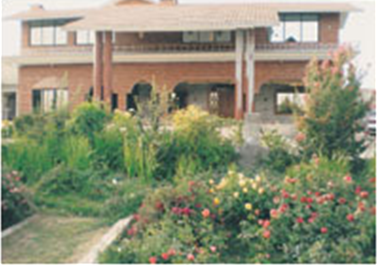Qila Abdullah tehsil: New Majak
This is a collection of articles archived for the excellence of their content. Readers will be able to edit existing articles and post new articles directly |
Qila Abdullah tehsil: New Majak
Many Good Reasons To Visit New Majak
By Khwaja Ali Shahid
Amidst my mother’s fears and warnings from friends, we went ahead with our plan to visit Qila Abdullah. We were invited by the Kakar family which somewhat rules the village, New Majak. Accompanied by my brother and a Pathan friend of mine we caught a bus from Karachi to Quetta for a 12-hour ride.
Location
Qila Abdullah is at a 90-minutes drive from Quetta. It is located on the same road that further goes to Chaman and then crosses the Pak-Afghan border. Qila Abdullah is famous for all the wrong reasons. The location of the district has a lot to do with the same. Although a part of Balochistan, Qila Abdullah and the surrounding districts are densely-populated with Pathans and not Balochis. District Qila Abdullah is made up of four tehsils, namely Qila Abdullah, Deoband, Gulistan and Chaman. There are many villages in the tehsil; one of the smaller villages is Majak. Around 150 years ago the village was supposedly divided and a new portion namely New Majak was created. New Majak (NM) is spread over an area of 2,500 acres while its population consists of only 1,000 people.
Family system
The father is the head of the family. Although most of the people are poor here, they tend to marry twice, thrice and sometimes even more! The more the number of boys, the better it is considered by them. Thus it was of no surprise to me when I came across boys having 8-12 siblings. One won’t find any woman on the streets or just anywhere. Men here are dominant.
Traditions
It appeared strange to us that each and every person hugged on meeting us. They greet everyone for about seven to eight times with different sentences and then when one sits down, they greet again! I bet cellular companies can make a fortune there, if the people there do the same while calling each other.
All the men, young or old, wealthy or poor eat from the same plates and drink from the same glass. It was amazing to know that they were not bothered about class or status like people in the big cities.
Jirga
Jirga tends to be the most important and unique aspect of the Pathan culture. Jirga is a type of gathering where the elder, honourable and important figures of the society take decision regarding different social, political, religious or financial problems. All the people tend to abide and respect all the laws and decisions of the Jirga.
I was told that following a disputed murder, the grand jirga decided that the people of NM won’t be allowed to travel through the adjacent village to rule out any more problems. This, however, increased our daily travelling distance by an hour!
I even took a part in a much smaller jirga. Due to the energy crisis, tube wells of the village were being used alternatively to avoid any break or overload. Two of the people were accused of not respecting the pact and secretly switching on six of their tube wells during the night. Amazingly the problem was discussed for some four hours, with no result! During the heated environment the surprising part was that everyone made sure that all the guest members from other villages, including the accused, are being supplied with ample tea and qehwa!
Food
Arriving there at dawn, we were led to the guest room for the sumptuous breakfast that included qehwa, tea, parathas, eggs, honey, plums, apples and the list goes on. I was amazed to know that except for the tea leaves everything was collected from their own farms. Lunches, dinners and numerous tea/qehwa breaks were no exception.
The famous foods here are shorba (where bread/roti is broken down and mixed into a bowl of lamb stew, couple of hours before being served; one is supposed to scoop that up with hands) and namkeen roast (usually a salty roasted lamb or sheep leg). Karhais (chicken and mutton) are served almost at all meals, not a regular for locals but for the visitors. Namkeen lassi is the favourite drink, served in a local utensil that can easily accommodate around three glasses in it! Bread or chapatis is another wonder, having a diameter of around two to three feet. It was a struggle for many to even finish half of it!
Flora and fauna
The notion of Balochistan being a barren province proved wrong there. Although the climate was unbelievably hot and dry, it somehow never affected the natural beauty of the area. There were orchards of apples, grapes and pomegranate trees with unripe fruits. Similarly, many other fruits and vegetables including tomatoes, cucumber, lime, brinjal, chillies, lady finger, watermelons, plum, peach and dates were being cultivated.
It was one of the most pleasant feelings to get the fruit of your choice directly from the tree, wash in the tube well water, and gulp it! I was told that almost all the grades of seven different types of apples are cultivated here, of which three types are even exported. The apples from the same orchards even won different prizes. The recent one was the second prize winner at the Export Promotion Bureau’s Apple Show.
Four different types of grapes are being cultivated here, of different colours, shapes and tastes.
Different types of animals are also raised here to fulfil the eggs, milk and meat requirements. These include lambs, sheep, Australian breed of cows and poultry animals.
Hospitality
Hospitality is the trademark of New Majak and guests are considered God’s blessing. For a five-day stay we received around 15 to 20 lunch and dinner invitations from different family members and friends of our hosts. There were invitations to visit schools, market or simply go for hunting. The host literally had to choose and arrange our schedule.
There is a myth that if a local finds a vertical/upright stem of green tea in his cup of qehwa then he is expected to host a guest soon. Our proud host twice showed us a vertical stem in his cup!
Education
It was a treat to watch the kids literally skipping through the lush green meadows to school. There are four primary schools there. However, I was told that only 25 per cent of the boys go to primary schools and the girls’ ratio was just two per cent. These figures were even worse for secondary education. The only degree college of the district is located in Tehsil Chaman that is some 50-70 km away! The nearest college, however, is in District Pishin (unbelievably famous for its high literacy rate) which is supposed to be at a walking distance!
People at NM are very much enlightened and want to send their children to schools. Many of the seniors gave us the example of the neighbouring District Pishin. They believed that Qila Abdullah was already 20 years behind the rest of Pakistan and if they don’t start educating their children they will fall back even further.
Housing
People are generally poor. Although the influential live in bungalows, most of the people live in small huts made of bricks, clay (chikni mitti) and guch (a supposedly ultra-quick, white coloured, brick binding paste, derived from the mountains in raw form in Afghanistan and Iran). It suits the dry climate of Balochistan as it loses its binding power in humid areas.
The homes are generally very small, but special effort is made to make a lively guest room. Instead of sewerage system mostly the washrooms and kitchens are connected with a 90 feet deep well dug outside the house, where all the waste goes. Due to the dry conditions, it virtually never fills up!





